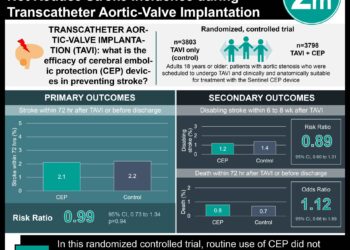Minority of American children meet pediatric guidelines for both physical activity and screen-time viewing
Jan 12th – Only 38% of American children ages 6-11 meet recommended guidelines for physical activity and screen-time viewing.
 [tabs tab1=”2MM Rundown” tab2= “2MM Full Report” tab3=”About the Authors”]
[tabs tab1=”2MM Rundown” tab2= “2MM Full Report” tab3=”About the Authors”]
[tab]
Image: PD
1. Only 38% of American children ages 6-11 meet recommended guidelines for physical activity and screen-time viewing.
2. Less screen-time viewing was not associated with greater physical activity in all subgroups.
The minority of American elementary school-aged children meet both recommendations for at least 60 minutes of physical activity and less than 2 hours per day of screen-time viewing levels. These findings serve as a benchmark of the effectiveness of current policy strategies. Since less screen time does not necessarily correspond to greater physical activity, physicians and policymakers should separately emphasize the importance of both. Particular attention needs to be paid to older children and obese children at higher risk for sedentary behaviors.
Limitations to the study include activity reported by proxy (parents). Parents may be unaware how their children spend free time or may be motivated to report healthy behaviors (social desirability bias). Further research is needed to improve the objectivity of physical activity assessments and explore the relationship between screen-time viewing and physical activity.
Click to read the study in JAMA Pediatrics
[/tab]
[tab]
1. Only 38% of American children ages 6-11 meet recommended guidelines for physical activity and screen-time viewing.
2. Less screen-time viewing was not associated with greater physical activity in all subgroups.
Primer: Lack of exercise and excessive screen-time viewing are associated with obesity and other negative health effects (1,2). In response to these findings, the American Academy of Pediatrics (AAP) created recommendations for children to engage in physical activity for ≥1 hour and sit in front of television screens for ≤2 hours per day (3). Physical activity is recommended to be moderate to vigorous in nature, includes both organized activities and free play, and can be cumulative. Screen-time viewing includes time spent for entertainment purposes in front of televisions, computers, video games, cell phones, and other electronic devices.
National policy efforts have been inspired by these findings as well. First Lady Michelle Obama’s “Let’s Move” campaign aims to reduce child obesity through the promotion of healthy eating, daily exercise, and community engagement (4). Concurrently, President Obama established the Task Force on Childhood Obesity, which is coordinating policy efforts to reduce childhood obesity prevalence to 5% by 2030. In February 2011, the Task Force issued a report that covered implementation strategies for the AAP guidelines on screen-time viewing and physical activity, among other topics (5).
The present study examines adherence to the AAP guidelines for physical activity and screen-time recommendations.
Background reading:
- Evidence based physical activity for school-age youth
- Systematic review of sedentary behaviour and health indicators in school-aged children and youth
- Expert committee recommendations regarding the prevention, assessment, and treating of child and adolescent overweight and obesity: summary report
- Let’s Move
- Childhood Obesity Task Force Report
This [cross-sectional] study: examined data from a 2009-2010 nationally representative sample of 1,218 American children between the ages of 6-11, completed by proxy (parent or guardian).
Only 38% of children met both physical activity and screen-time viewing recommendations; 70% and 54% separately met physical activity and screen-time recommendations, respectively. Older children (ages 9-11 vs. ages 6-8, OR: 0.57, p=0.009) and obese children (obese vs. not-obese, OR: 0.53, p=0.001) were less likely to meet either guideline. Hispanic children were more likely to meet the screen-time viewing recommendation (OR: 1.69, p=0.007) but less likely to meet the physical activity recommendation (OR: 0.60, p=0.031).
In sum: The minority of American elementary school-aged children meet both recommendations for at least 60 minutes of physical activity and less than 2 hours per day of screen-time viewing levels. These findings serve as a benchmark of the effectiveness of current policy strategies. Since less screen time does not necessarily correspond to greater physical activity, physicians and policymakers should separately emphasize the importance of both. Particular attention needs to be paid to older children and obese children at higher risk for sedentary behaviors.
Limitations to the study include activity reported by proxy (parents). Parents may be unaware how their children spend free time or may be motivated to report healthy behaviors (social desirability bias). Further research is needed to improve the objectivity of physical activity assessments and explore the relationship between screen-time viewing and physical activity.
Click to read the study in JAMA Pediatrics
By [CH] and [LH]
More from this author: Regional increases in unemployment in infancy associated with development of behavioral problems in American adolescents, Intensive lifestyle intervention in overweight adults associated with higher remission rates of Type 2 Diabetes, Dietary salt intake associated with greater consumption of sugar-sweetened beverages in children
© 2013 2minutemedicine.com. All rights reserved. No works may be reproduced without written consent from 2minutemedicine.com. Disclaimer: We present factual information directly from peer reviewed medical journals. No post should be construed as medical advice and is not intended as such by the authors or by 2minutemedicine.com. PLEASE SEE A HEALTHCARE PROVIDER IN YOUR AREA IF YOU SEEK MEDICAL ADVICE OF ANY SORT. Content is produced in accordance with fair use copyrights solely and strictly for the purpose of teaching, news and criticism. No benefit, monetary or otherwise, is realized by any participants or the owner of this domain.
[/tab]
[tab]
 Caroline Huang: Caroline is a 3rd year Ph.D. candidate in Public Health at the University of Oxford’s Ethox Centre, where she is a Rhodes Scholar.
Caroline Huang: Caroline is a 3rd year Ph.D. candidate in Public Health at the University of Oxford’s Ethox Centre, where she is a Rhodes Scholar.
 Leah Hawkins: Leah is a 5th year M.D./MPH candidate at Harvard Medical School.
Leah Hawkins: Leah is a 5th year M.D./MPH candidate at Harvard Medical School.
[/tab]
[/tabs]




